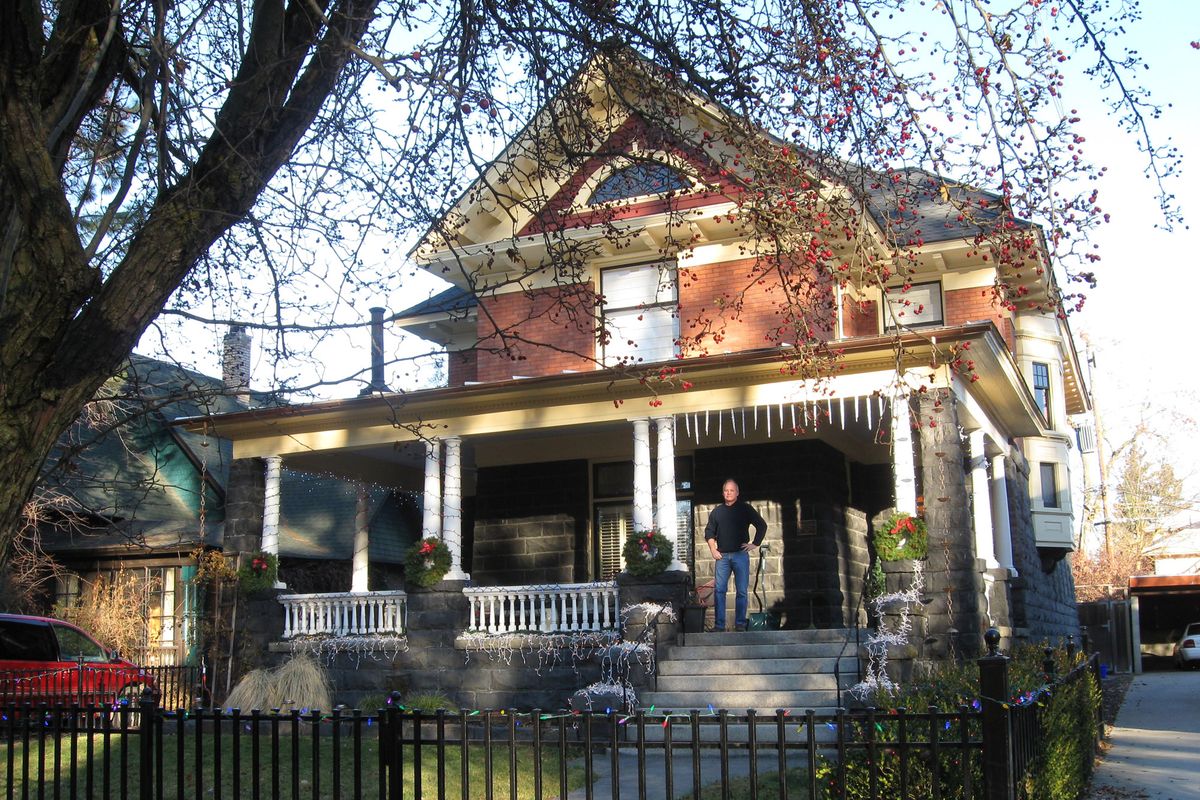Homes for the holidays
Tour benefits heritage fund

The Phelps House, a Free Classic Queen Anne mansion in Spokane, was already restored when Joe Poire and Vicki Carter bought it a year ago.
A previous owner had removed apartments and returned the mansion at 2118 W. Second Ave. to its original use as a single-family home.
But like most old houses, the mansion still needed work.
In the past year, the couple has repainted and repaired exterior wood; rebuilt the 50-plus windows; repointed chimneys; built and installed storm windows; and restored a baluster on a second-floor maid’s balcony.
They power-washed and cleaned the exterior, including basalt rock walls on the first floor and granite steps leading to the spacious porch.
“We re-fixed the whole house,” Poire said.
In addition, the couple got the home listed on the Spokane Register of Historic Places last February.
On Sunday, Poire and Carter are opening the house to the public as one of three stops on the 10th annual Holiday Heritage Home Tour sponsored by the Spokane Preservation Advocates from noon to 4 p.m.
The other homes are the Patsy and Mary Clark House at 2208 W. Second Ave. and the Second Fotheringham House at 2128 W. Second Ave.
A tradition of the tour is to have the homes decorated for the holidays.
Tickets, which cost $15, are available at two of the three homes during the tour. Proceeds will benefit the SPA heritage fund, which is used to assist in preservation projects.
Residents in Spokane will remember that the Clark House was formerly an upscale restaurant. It is now headquarters for a Spokane law firm. The Fotheringham House had been a bed and breakfast for years and has been operating as a wedding and events facility.
As a group, the tour homes make up more than a block of fine residential architecture in Browne’s Addition, which is recognized as a national historic district. All three homes look out on Coeur d’Alene Park.
Poire said he was drawn to the elegant architecture and the fine craftsmanship of the Phelps House.
“For us, it’s a pretty warm place,” he said.
Completed in 1901, the house was designed by renowned architect Albert Held and built for lumberman Moses Phelps and his bride, Netta Sheldon Phelps, a socialite and philanthropist.
In her later years, Netta Phelps wrote a historical narrative, “The Valiant Seven,” about the Sager orphans who came west on the Oregon Trail, four of whom survived the Whitman Massacre and subsequent Cayuse captivity.
Held was known for his ability to create fashionable and solid homes.
“You walk up to the house and you know it’s as solid as a rock,” said Linda Yeomans, a historic consultant who prepared the nomination report for the Spokane register listing.
The Phelps House, with 5,300 square feet of space, cost $10,000 to build.
“Held’s design for the Phelps House is an especially fine example of ‘Free Classic’ detailing, a subtype of the Queen Anne style,” according to the tour brochure.
The front-facing gable is adorned with a fan light while other parts of the exterior are dressed up with bay windows and balconies.
The formal entry is filled with fine hand-rubbed oak paneling, and the extensive woodwork continues into the main living area where a gas-plumbed fireplace with a wood-and-tile mantel occupies center stage.
Poire said he brought to the home period and replica light fixtures. The oak floors include inlaid medallions and borders.
A stamped copper wall covering is found on the lower portion of the living room. Pocket doors separate the living and dining rooms.
The grand staircase rises off the entry.
According to the home’s historic nomination, Poire and Carter purchased the home for $570,000. Poire estimated that he has invested more than $100,000 in maintenance and restoration.
Yeomans said in the nomination, “The present exterior appearance, design, and materials of the Phelps House matches specifications and designs pictured on the original 1901 elevation drawings, which is remarkable after more than a century.”